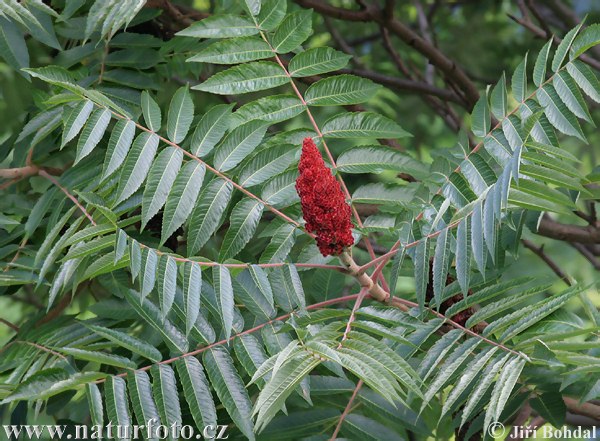Warning!
This wonderful treat has a poisonous lookalike cousin. Poison Sumac is more of an eastern US thang but can be found as far west as Idaho. I fear my books are currently packed away so a quick Wikipedia quote will have to suffice: "All parts of the plant contain a resin called urushiol that causes skin and mucous membrane irritation to humans. When burned, inhalation of the smoke causes diarrhea and other internal irritations." I've lived around the poisonous variety most of my life and am still adjusting to the staghorn since hitting the coast.
As with all things wild and edible, please always research for dangerous lookalikes BEFORE trying a new find. Most years there's someone who thought they were enjoying a wild onion but died because it was death camas instead.
Regarding the staghorn tea, I have yet to get a chance to try it but have read it can vary year to year with some years being terrible and the next absolutely wonderful. So, if at first you don't succeed, try again next year.
Watchman Note:
The warning is valid but they do not look alike - but some people will not look at the picture and just follow the "sumac" label. Here is a picture of poison sumac - note the rounded leaves and white berries in sprigs. The bottom photo is staghorn sumac - it is called staghorn because of the shape of the cluster of red berries and the fact that the small shoots are "fuzz-covered", just like a young deer's antlers. Staghorn Sumac is very widely used and consumed in the middle east as a drink, a flavoring and a dye. Heres a photo of the staghorn sumac. Notice the leaves look jaggedly pointy, almost like marijuana leaves (can I say that word out loud?):

Staghorn Sumac is very widely used and consumed in the middle east as a drink, a flavoring and a dye. Heres a photo of the staghorn sumac. I will also note that the leaves on the tree on our property are a lot more jagged than this photo.
